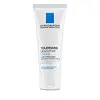What's inside
What's inside
 Key Ingredients
Key Ingredients

 Benefits
Benefits

 Concerns
Concerns

 Ingredients Side-by-side
Ingredients Side-by-side

Water
Skin ConditioningGlycerin
HumectantPropanediol
SolventCaprylic/Capric Triglyceride
MaskingCetearyl Ethylhexanoate
EmollientMyristoyl/Palmitoyl Oxostearamide/Arachamide Mea
Skin ConditioningCetearyl Alcohol
EmollientHelianthus Annuus Seed Oil
EmollientCamellia Sinensis Seed Oil
HumectantHydrogenated Vegetable Oil
EmollientOlea Europaea Fruit Oil
MaskingVitis Vinifera Seed Oil
EmollientCarthamus Tinctorius Seed Oil
MaskingSimmondsia Chinensis Seed Oil
EmollientSunflower Oil Decyl Esters
Skin ConditioningPortulaca Oleracea Extract
Skin ConditioningViscum Album Fruit Extract
SoothingAcetyl Hexapeptide-8
HumectantPolyglyceryl-10 Distearate
EmulsifyingGlyceryl Stearate
EmollientSorbitan Stearate
EmulsifyingTocopherol
AntioxidantBeta-Glucan
Skin ConditioningPhytosterols
Skin ConditioningAllantoin
Skin ConditioningCarbomer
Emulsion StabilisingSodium Phytate
Stearic Acid
CleansingSodium Hyaluronate
HumectantAnthemis Nobilis Flower Oil
MaskingSalvia Officinalis Oil
MaskingSantalum Album Oil
Masking1,2-Hexanediol
Skin ConditioningCaprylyl Glycol
EmollientWater, Glycerin, Propanediol, Caprylic/Capric Triglyceride, Cetearyl Ethylhexanoate, Myristoyl/Palmitoyl Oxostearamide/Arachamide Mea, Cetearyl Alcohol, Helianthus Annuus Seed Oil, Camellia Sinensis Seed Oil, Hydrogenated Vegetable Oil, Olea Europaea Fruit Oil, Vitis Vinifera Seed Oil, Carthamus Tinctorius Seed Oil, Simmondsia Chinensis Seed Oil, Sunflower Oil Decyl Esters, Portulaca Oleracea Extract, Viscum Album Fruit Extract, Acetyl Hexapeptide-8, Polyglyceryl-10 Distearate, Glyceryl Stearate, Sorbitan Stearate, Tocopherol, Beta-Glucan, Phytosterols, Allantoin, Carbomer, Sodium Phytate, Stearic Acid, Sodium Hyaluronate, Anthemis Nobilis Flower Oil, Salvia Officinalis Oil, Santalum Album Oil, 1,2-Hexanediol, Caprylyl Glycol
Water
Skin ConditioningGlycerin
HumectantSqualane
EmollientDimethicone
EmollientZea Mays Starch
AbsorbentNiacinamide
SmoothingAmmonium Polyacryloyldimethyl Taurate
Emulsion StabilisingMyristyl Myristate
EmollientStearic Acid
CleansingCeramide NP
Skin ConditioningPotassium Cetyl Phosphate
EmulsifyingGlyceryl Stearate Se
EmulsifyingSodium Hydroxide
BufferingMyristic Acid
CleansingPalmitic Acid
EmollientCapryloyl Glycine
CleansingCaprylyl Glycol
EmollientXanthan Gum
EmulsifyingWater, Glycerin, Squalane, Dimethicone, Zea Mays Starch, Niacinamide, Ammonium Polyacryloyldimethyl Taurate, Myristyl Myristate, Stearic Acid, Ceramide NP, Potassium Cetyl Phosphate, Glyceryl Stearate Se, Sodium Hydroxide, Myristic Acid, Palmitic Acid, Capryloyl Glycine, Caprylyl Glycol, Xanthan Gum
 Reviews
Reviews

Ingredients Explained
These ingredients are found in both products.
Ingredients higher up in an ingredient list are typically present in a larger amount.
Caprylyl Glycol is a humectant and emollient, meaning it attracts and preserves moisture.
It is a common ingredient in many products, especially those designed to hydrate skin. The primary benefits are retaining moisture, skin softening, and promoting a healthy skin barrier.
Though Caprylyl Glycol is an alcohol derived from fatty acids, it is not the kind that can dry out skin.
This ingredient is also used as a preservative to extend the life of products. It has slight antimicrobial properties.
Learn more about Caprylyl GlycolGlycerin is already naturally found in your skin. It helps moisturize and protect your skin.
A study from 2016 found glycerin to be more effective as a humectant than AHAs and hyaluronic acid.
As a humectant, it helps the skin stay hydrated by pulling moisture to your skin. The low molecular weight of glycerin allows it to pull moisture into the deeper layers of your skin.
Hydrated skin improves your skin barrier; Your skin barrier helps protect against irritants and bacteria.
Glycerin has also been found to have antimicrobial and antiviral properties. Due to these properties, glycerin is often used in wound and burn treatments.
In cosmetics, glycerin is usually derived from plants such as soybean or palm. However, it can also be sourced from animals, such as tallow or animal fat.
This ingredient is organic, colorless, odorless, and non-toxic.
Glycerin is the name for this ingredient in American English. British English uses Glycerol/Glycerine.
Learn more about GlycerinStearic Acid is a fatty acid. It is an emollient, emulsifier, and texture enhancer.
As an emollient, stearic acid helps soften skin. It aids the skin's protective barrier by preventing water loss. It also provides a gentle cleansing effect without stripping away natural oils.
Stearic acid may also be used to enhance the texture of products. It can add volume and stabilize ingredients such as water and oil. This can help water and oil ingredients from separating.
Sources of stearic acid include animal or vegetable fats/oils such as coconut or shea. It can be naturally found in butter, cocoa butter, shea butter, vegetable fats, and animal tallow.
This ingredient may not be Malassezia folliculitis, or fungal-acne safe.
Learn more about Stearic AcidWater. It's the most common cosmetic ingredient of all. You'll usually see it at the top of ingredient lists, meaning that it makes up the largest part of the product.
So why is it so popular? Water most often acts as a solvent - this means that it helps dissolve other ingredients into the formulation.
You'll also recognize water as that liquid we all need to stay alive. If you see this, drink a glass of water. Stay hydrated!
Learn more about Water